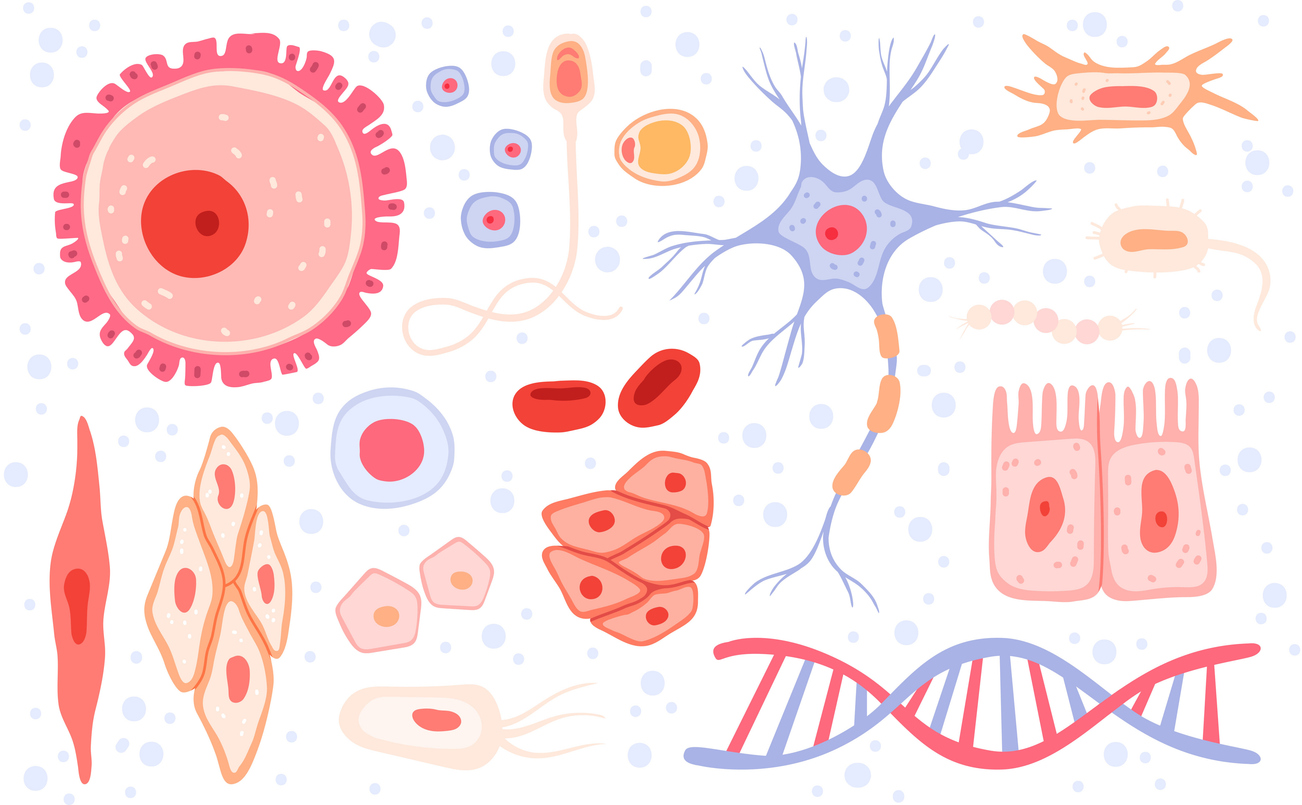
The human body is made of trillions of cells, each of which needs to “talk” with its neighbors to stay healthy. But when disease strikes, that cell-to-cell communication can go haywire, setting off a chain reaction of cell death and decay.
Research shows that cellular communication plays an important role in glaucoma, a disease that leads to vision loss due to damage to retinal ganglion cells and deterioration of the optic nerve, the pathway that connects the eyes to the brain. Now, BrightFocus National Glaucoma Research grant recipient Michael Risner, PhD, and his colleague David Calkins, PhD, are leading a first-of-its-kind study to identify the components of cell-to-cell communication that could one day help repair the damage caused by glaucoma and even restore vision.

“Cells talk to each other through a lot of different molecules that are transmitted by different modes of communication,” Dr. Risner explained. One of these modes of communication involves exosomes, tiny pouches that can carry proteins and other important signaling molecules from cell to cell.
A new study from Dr. Risner’s lab shows that exosomes may be key to developing stem cell-based treatments for glaucoma. By uncovering these tiny messengers hurt or help cells, his work represents a potential new facet of glaucoma therapy that could halt vision loss and even restore sight — but first, it’s important to understand what drew Dr. Risner to investigate exosomes in the first place.
The importance of exosomes
Previous research revealed that supplementing exosomes helped damaged eye cells survive and repair themselves. This suggested that exosomes might protect cells in the eye and promote healing. To better understand this relationship between exosomes and glaucoma, Dr. Risner wanted to see if the opposite was true: whether removing exosomes entirely would damage important cells in the eye.
His lab found that preventing exosome formation produced glaucoma-like features. This discovery highlighted how crucial these tiny messengers are in keeping eye cells healthy. But still, the question remained: what exactly were exosomes doing that protected cells?
In his most recent study, Dr. Risner explored this question further using stem cells. Stem cells have long been considered a potential cure for glaucoma. Scientists hope that transplanting healthy stem cell-derived retinal ganglion cells into the retina — where the optic nerve begins — to replace the ganglion cells damaged by the disease.
But Dr. Risner suspected there was a hidden obstacle. If damaged cells in the retina are still sending out harmful signals, those signals might prevent transplanted stem cell-derived retinal ganglion cells from thriving.
To test this idea, his lab created a culture of damaged, stressed cells that couldn’t make exosomes. Then, they transplanted healthy cells into the stressed culture.
Dr. Risner found his theory was correct: the healthy cells started to accumulate damaged mitochondria from the stressed cells that weren’t able to produce exosomes. “We found that the unhealthy cells appear to use the healthy cells as a ‘dumping ground’ for degraded mitochondria,” Dr. Risner explained.
“As we all know, mitochondria are the powerhouse of the cell, fueling much of cellular activity required for sight,” he continued. “However, when mitochondria degrade, these organelles release pro-degenerative molecules that can lead to cell death.”
A missing link for promising glaucoma therapy approaches
Dr. Risner’s findings have significant implications for the development of glaucoma treatments, especially those involving stem cells. For stem cell therapies to work, scientists may need to control how cells communicate in the retina. Without this control, damaged cells could sabotage healthy ones, making it harder for new treatments to succeed.
The results suggest that cell-to-cell communication needs to be controlled to help stem cell-derived ganglion cell transplantation treatments for glaucoma be effective — otherwise, the damaged cells will “dump” their damaged mitochondria into the healthy cells. The results also show why exosomes are so important to keep visual cells healthy; without them, cells become stressed and start offloading their defective mitochondria to the cells around them.
The research also underscores the importance of exosomes in protecting eye health. These tiny messengers prevent damaged cells from spreading their problems to healthy ones, keeping the entire system in balance.
“We need to fully understand the materials harbored by the distinct types of extracellular vesicles, their distinct impacts on healthy and diseased tissues, and the mechanisms that generate each type of extracellular vesicle,” Dr. Risner said.
Dr. Risner’s work represents a critical step toward better treatments — and even a cure — for glaucoma, a disease that affects millions of people worldwide. By unlocking the secrets of how cells communicate, his research could help stop vision loss in its tracks and restore sight for those living with the disease.
About BrightFocus Foundation
BrightFocus Foundation is a premier global nonprofit funder of research to defeat Alzheimer’s, macular degeneration, and glaucoma. Through its flagship research programs — Alzheimer’s Disease Research, Macular Degeneration Research, and National Glaucoma Research— the Foundation has awarded nearly $300 million in groundbreaking research funding over the past 51 years and shares the latest research findings, expert information, and resources to empower the millions impacted by these devastating diseases. Learn more at brightfocus.org.
Disclaimer: The information provided here is a public service of BrightFocus Foundation and is not intended to constitute medical advice. Please consult your physician for personalized medical, dietary, and/or exercise advice. Any medications or supplements should only be taken under medical supervision. BrightFocus Foundation does not endorse any medical products or therapies.
- Eye Health
- Eye-brain connection
- Treatments
Featured Grant Recipients

Michael Risner, PhD
Oakland University William Beaumont School of Medicine






